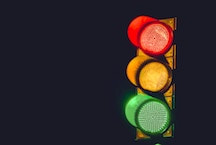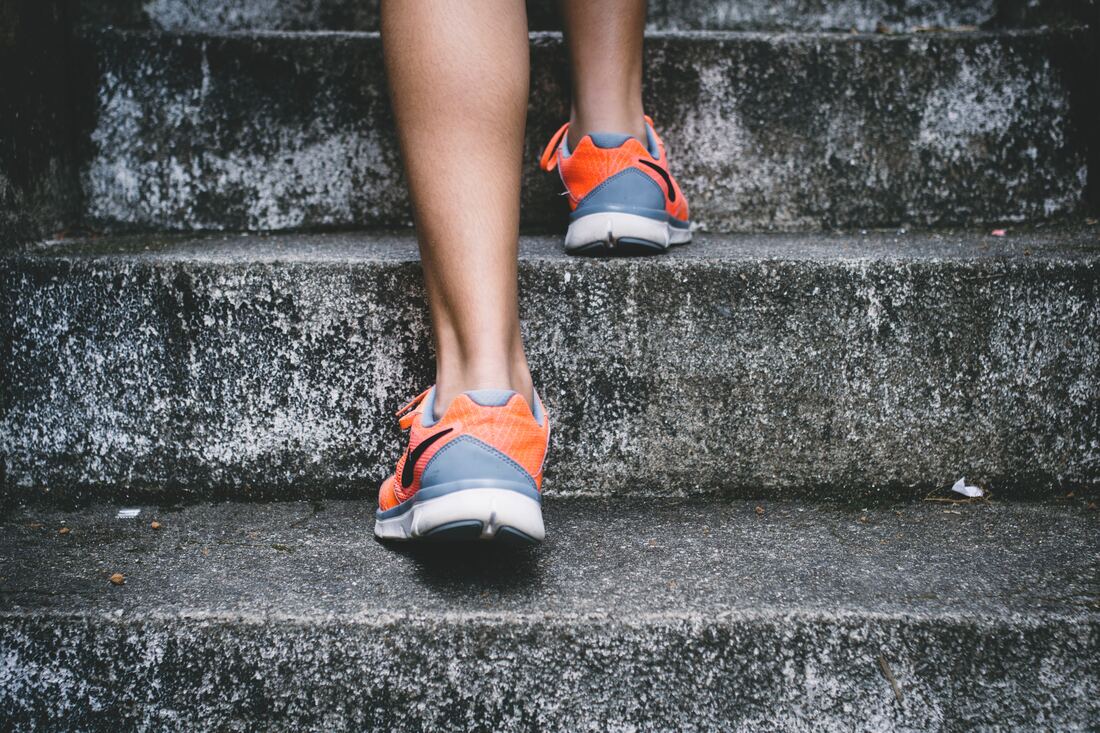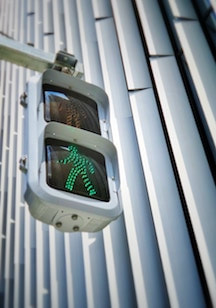 Pain exists for a reason. It is a warning sign that helps us protect our tissues. So shouldn’t we always heed the warning, and do everything in out power to avoid pain? The short answer is no, and this post is the longer, more detailed answer to that question, because pain is too important a phenomenon to misunderstand. Completely disregarding pain signals can lead to inappropriate movement patterns and habits, and subsequently to gradual, or even sudden, tissue breakdown. But being too avoidant of pain can lead to tissue weakness, deconditioning and decreased function. It can even shorten our lives. Sounds like a bit of a dilemma, doesn’t it? But it need not be, so let’s take a closer look. We have evolved for a lifestyle where pain co-exists with other drivers such as hunger or the need for social belonging and safety. If our prehistoric ancestors hurt their knee or their back a bit, they still had to keep moving in order to forage and hunt. The pain simply meant “move with awareness, maybe a bit slower or differently”. It did not mean “Stop!” Only the excruciating pain of a broken bone would have categorically stopped hunter-gatherers in their tracks. This balancing act helped them recover without weakness. Today we have high-tech imagery that shows what we are told is damage to our tissues, experts that give us ominous-sounding diagnoses for our ailments, and the ability to put dinner on the table without being physically active. This has gradually lead to a different interpretation of pain. Now virtually all pain seems to mean “stop”. This leads to lifestyle where we carefully avoid feeling more of it by moving less. Unfortunately, relating to pain in this manner can actually lead to the very thing we are trying to protect ourselves from, more pain and decreased function. Taking steps to avoid pain can sometimes lead to more, and chronic pain. But just like we use our intellect, instead of our hunger, to tell us when we should get some exercise these days, we can figure out when to move and when to stop even though circumstances don’t dictate the rules anymore. In order to do that we need to take a closer look at the various types of pain and what they mean. Pain can be divided into four types: nociceptive, peripheral neurogenic, central neurogenic and central sensitization. Peripheral neurogenic is nerve pain like the kind stemming from a pinched nerve. Central neurogenic pain stems from damage to the brain from an insult like a stroke, and central sensitization is an exaggeration of the type and intensity of a painful, and even non-painful, signal that can occur with chronic pain. I’ve written about that here. But most of the time what we’re feeling is musculoskeletal pain, ie the nociceptive type. This is pain stemming from tissue injury such as the pain that may occur after exercise or stubbing a toe, inflammation, pain from cramping, or other phenomena that lead to pain due to hypoxia, or insufficient oxygen in the tissue. Below is a chart where the various types of pain are organized according to my “traffic light system” that can help you decide how to related to a pain you’re feeling and know whether you should move or avoid movement. TRAFFIC LIGHT SYSTEM OF PAIN Red- severe, sharp pain that takes your breath away - Stop doing what you’re doing. Yellow- Some discomfort that doesn’t seem to get worse with what you’re doing - Keep moving, with awareness. Green- movement feels great, or is gradually decreasing the discomfort - Keep right on moving cap’n! Here are some examples of conditions where you might judge the pain you feel as either a green, yellow or red light: Green Yellow Red Muscle soreness from exercise, Soreness and pain in tissues such as A broken or se- stiff muscles, arthritic joints, ligaments and tendons that have very weakened been overloaded and hurt (tendonitis, bone or other plantar fasciosis etc), intense muscle conditions where cramps and spasm, healing tissues you’ve been told to absolutely Central sensitization avoid loading Central neurogenic pain the tissue for a while, recent surgery As you can see, pain should rarely be interpreted as an absolute ‘stop’. But, why not err on the side of caution and avoid the discomfort caused by movement when soreness or pain is present? Why, I thought you’d never ask! The reason we should always move if we can (no red light present) is that our bodies unequivocally need movement. That’s how they are designed. Movement adds forces to our tissues, signaling the need to build them stronger. Movement increases blood circulation, bringing oxygen and building blocks to tissues, helping them grow stronger and repair themselves after use or injury. Movement keeps our nervous system healthy and maintains our ability to feel, coordinate movement and balance. Any time we have to, or choose to, avoid movement, we are choosing not to have these phenomena benefit us, and unfortunately this causes our tissues gradually atrophy, or grow weaker. This makes us not just less able and strong, but also makes us more vulnerable and more at risk for injuries. Exercise also decreases pain by activating brain pathways that block pain signals, so suffering from pain should actually be a motivator for movement, not movement avoidance. Speaking of injuries, some of us don’t choose the too careful, pain-pain-avoidant path. They stubbornly keep charging ahead, and see pain as something of a personal offense, and pushing through the pain as a badge of honor. (You know who you are!) Remember the yellow light that means ‘move with awareness’? That also means intelligently changing the load on your tissues as needed, even as you keep moving. A runner whose hamstrings are hurting, and don’t get better with continued running, should of course address the reason for the pain, and during this process s/he will most likely benefit from some modification of their sport; running less or less often. Here the ‘awareness’ leads to change, being aware of what it is that is causing the pain and addressing the issue. (Hint: that most likely means a consultation with a physical therapist. These things can sometimes be hard to figure out on your own.) And speaking of yellow lights, there are many circumstances that should alert us to the need to ‘move with awareness’ and very gradually give out bodies the chance to grow stronger. If you are increasing your activity level, whether you are a seasoned runner who wants to increase your mileage or are starting an exercise routine for the very first time, give your tissues time to gradually get stronger. Connective tissue, which makes up most of what we are: bones, ligaments, tendons, skin etc, grows stronger much slower than muscles do. Don’t run ahead, literally or figuratively , and only follow the lead of your muscle strength. People with hypermobile joints, approximately 5-15% of the population, should also “start low and go slow” and give their weaker connective tissue a fair chance to grow stronger. If you are recovering from an injury, you are also rebuilding your tissues, so increase activity at an appropriate pace. So, when in doubt, move. Consult the traffic light system, decide whether yours is a green, yellow or red light, and keep moving. Get some movement every day, and more intense movement at least three times a week, and enjoy growing stronger!
4 Comments
|
Archives
February 2024
|


 RSS Feed
RSS Feed